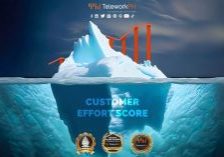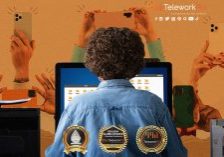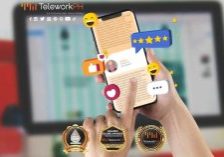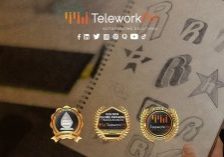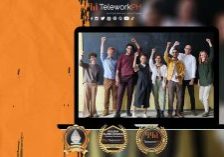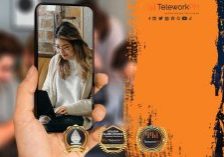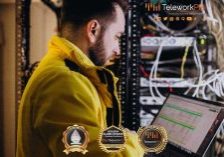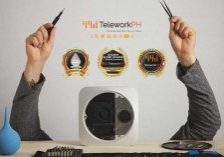No GPTs for Old Men
TeleworkPH
Published: December 1, 2023
GPTs are something else. I’ve already spent a good deal of time playing around with creating my GPTs as well as exploring the masterful work of others. Am I impressed? I suppose so. I mean it hasn’t even been a full year since OpenAI launched ChatGPT and the progression has been astounding. GPTs are the next logical step.
… and I don’t see it stopping here. In a year or two from now, we’ll all look back and think how “old school” ChatGPT was. Don’t believe me? Well think about this — I’ve seen things go from vinyl to virtual reality in the blink of an eye. When the world welcomed me for the first time the Vietnam War was still going on and we all listened to music on records. There was no cable TV. Then 8-track came out, cassette tapes, CDs, Betamax, VHS, Laser Discs, DVDs… Our phone is connected to the wall.
I spent so much time and money on the above only to have it all become useless.
Now, you may read this and think it’s the reminiscing of an old man who still listens to Grunge music, wears flannel, can’t keep up with the times, and scoffs at technological advancements. On the contrary, I embrace new technology and AI. Although I do have to admit; that self-driving cars scare the hell out of me and I’m not fully prepared to put all of my trust into AI (ever see the movie Wargames?)
I mention the above only to show where we were technologically speaking just a short time ago. And how quickly the evolution took place. The gaps between advancements are getting smaller and with a reported two million developers on OpenAI’s payroll — they say it’s only a year until they launch autonomous AI agents.
I am fully aware, as we all are, of the other advancements AI is making. Healthcare and medicine is one area. But would you want a GPT to diagnose your symptoms? Of course not. So as a business leader are you ready, even with all of the amazing advancements, to let an autonomous AI agent handle your customers?

GPTs For Politicians
Let’s say we created a fancy GPT workflow and we’ve uploaded every law, government document, and piece of bureaucratic paper into it and eventually it becomes AGI. The question is: does that brew up a great president? How about an entire government? Let me tell you, if decisions were just about speed and efficiency, maybe. But that’s like saying my blender can cook a better meal than me because it can chop faster.
It’s like asking a computer to write a symphony or paint a masterpiece – yes, it can mimic the process, but can it capture the soul?
Decision-making, especially in the realm of politics, isn’t just about processing data. It’s about understanding the nuances of human emotion, the weight of history, and the complexities of societal needs. It’s about empathy, a quality that no algorithm, no matter how sophisticated, can truly possess. A GPT might know all the laws, but does it understand why they exist? Can it weigh the moral implications of a decision? Can it inspire, comfort, or lead in times of crisis?
We’ve seen how AI can enhance our lives, but let’s not get carried away. A GPT might be the grand poobah of crunching numbers and spitting out data, but when it comes to leading a country, it’s about as useful as a screen door on a submarine. The human element – our compassion, our ability to reason beyond data, our moral compass – these are the things that make a great leader.
No GPT can replicate the human spirit. A GPT president? That’s like putting a calculator in charge of your life decisions. Sure, it can do the math, but can it understand the story behind the numbers?
It’s not just about making decisions. It’s about making the right decisions, for the right reasons. And that, my friends, is something no GPT, no matter how advanced, can do. So, let’s keep our AI where it belongs – as a tool, not a replacement for the irreplaceable qualities that make us human.

GPTs For Business Leaders
For business leaders across many industries, OpenAI tools like GPTs can be used in many ways. For instance, data analysis can predict customer behavior based on certain patterns. I know for myself that when I open my home shopping app, there are suggestions there for me based on my previous searches and even purchases. Now this can be helpful—but it’s not foolproof and we should never think it is. I really only need ONE blender. Having bought one, I now wish to move on with my life. No need to see seven more styles or one that’s on sale at a lower price than I already paid. Depressing.
Ok, so here I make light of it but the fact remains; It’s an utter and total FAIL. And what’s more, a missed opportunity. This is an example of where AI and soon, GPTs are going to be used incorrectly. A human using common sense would know that unless I am opening a milkshake shop, I won’t need another major appliance for quite some time. Let’s show a different item.

Not Dissing GPTs
My team and I have dedicated a lot of our time and efforts to this blog to write about ways to improve B2C businesses through customer interactions and the customer journey. That’s where the crux of the matter lies. It’s not about AI or GPTs being inherently flawed; it’s about how they’re used. And the biggest mistake we can make is thinking these tools can replace the human touch. Sure, they can analyze data, predict patterns, and even make some neat suggestions. But can they understand the subtleties of human desires and needs? Not even close.
The importance of keeping a human in the loop is paramount. It’s about balance, about using AI as a tool to enhance our capabilities, not replace them. A human can look at the data, understand the context, and then make a decision that’s not just based on algorithms but also on empathy, understanding, and real-world knowledge. Again, like a doctor. We need that human element to interpret, to add a layer of common sense that no AI currently possesses.
Business leaders need to recognize this. Use AI and GPTs to augment your capabilities, not replace them. Let them handle the heavy lifting of data processing, sure, but keep the final decision-making in human hands. This includes customer interactions. That way, we can avoid the pitfalls of a purely automated world and ensure that our businesses stay grounded in the human experience. It’s not about AI vs. humans; it’s about how AI and humans can work together to create something better than either could achieve alone.
…but this doesn’t seem to be the goal of OpenAI.

GPTs in Customer Support
Now, let’s take this whole GPTs-for-politicians scenario and compare it to customer support. Imagine replacing your entire customer support team with a GPT system. Sure, it sounds efficient, doesn’t it? It’s like having a supercomputer that knows every product detail, every policy, every FAQ. But here’s the kicker: Does it know your customers?
And this is what scares me more than self-driving cars.
Customer support isn’t just about answering questions; it’s about understanding the person on the other end of the line. It’s about empathy, about sensing frustration or confusion in a voice, about offering reassurance or a kind word when needed. Hearing a baby crying in the background or knowing when your customer is in the car driving or on their short lunch break and doesn’t have time to lollygag around. A GPT might give the right answer, but can it provide the right feeling?
This is where the blender analogy comes back into play. My blender might chop faster, but can it taste the food and know when it needs a pinch of salt? Similarly, a GPT can process information rapidly, but can it understand the frustration of a customer who’s been bounced around different departments? Can it empathize with a mother who’s trying to fix a broken toy for her child?
The truth is, that customer support is as much about the human connection as it is about solving problems. It’s about building relationships, trust, and loyalty. Sure, GPTs can be a part of this process, handling routine inquiries and providing instant responses. But the moment we rely solely on them, we risk losing the very essence of customer support: human touch and understanding.
So, while we can (and should?) use GPTs to enhance our customer support capabilities, let’s not fool ourselves into thinking they can replace the nuanced, empathetic, and sometimes beautifully imperfect human interactions that truly define great customer service. Remember, it’s not just about finding answers. It’s about connecting, understanding, and caring – and no AI is equipped to handle that… yet.
No GPTS For Old Men
There’s a movie called “No Country For Old Men” that came out in 2007. In a nutshell, it’s about an old sheriff in a desert town set in the 1980s who struggles with getting old. He ponders if as he ages he can keep up with the new level of evil and crime that is evolving in the world. So now I wonder…how many businesses will be able to keep up with this level of AI advancements?
I’ve been on the phone lines and I’ve answered innumerable emails. I’ve logged thousands and thousands of hours in customer support. Before that, I worked in the restaurant industry where daily customer interactions were a part of life. I know how to talk to people, but most importantly I can listen with empathy. Does it make me an expert? You’ll have to decide that for yourself. The thing is I’ve always sought to improve myself. I wanted to connect with customers and learn…I mean learn. Because of these abilities, the high CSATs and reviews rolled in. Not because I had the right answers, but because of how I related to people and did my best to fully understand what they were experiencing.
In the support game, you want agents who can go beyond just finding the right answer. When I was back on the phone lines the biggest issue was always being able to access customer data and knowledge bases quicker. So that’s where GPTs can come in. Then that information should be relayed to your customer from a human. You can teach GPTs and AGIs to say “sorry for the inconvenience” but you can’t teach it to mean it.
Is AI making us all “old men”?

Follow us for more great content and business insights:




























